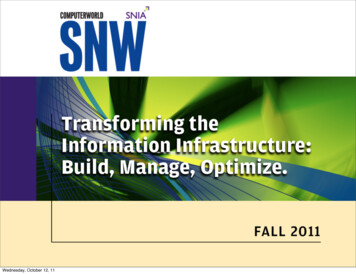
Transcription
10/29/2018of AUBDR. DEBRA GIERUT MDDEPARTMENT OF OBSTETRICS AND GYNECOLOGYKAISER PERMANENTE, ORANGE COUNTYDISCLOSURES I have no financial disclosures Lisa Samerdyke, the Director of National Accounts for Hologic provided the trimmed video Iwill use in this presentation, and she is also my friend. I am the Orange County Section Chair for ACOG and serve as a delegate to the CaliforniaMedial Association, advocating for accessible, affordable, quality care for everyone inCalifornia I have 3 daughters and I am passionate about women’s health and teaching quality andcomplete care to those who may serve them in the future1
10/29/2018Where are we going today .? Definitions and Terminology Etiologies of AUB Evaluation Treatment options New stuff VignettesDefinitions Bleeding from the uterus that is abnormal in regularity, volume,frequency, or duration in the absence of pregnancy Classify as acute or chronic ( occurring for previous 6 months) Acute may be spontaneous or in the context of chronic bleeding. It is worth knowing, is the patient pre or post menopausal 9-20% of reproductive age women have significant AUB thatinterferes with quality of life Accounts for about 1/3 of ambulatory visits to gynecologists Significantly impacts a women’s quality of life, productivity, expenseof hygiene products, and utilization of health care resources2
10/29/2018FIRST THINGS FIRST Pregnant or not? Menopausal or not? Determine acuity Rule out “bad” things-RULE #1plan Make aHemodynamically Unstable orHypovolemic Takeyour own pulsefor help 1-2 large bore IV lines Initiate procedures fortransfusion of blood andclotting factors AskAnatomy, Anatomy, Anatomy3
10/29/2018Menstrual CycleThis Photo by Unknown Author is licensed under CC BY-SAConsider The Etiology2011 IFGO and ACOG adopted new classification systemPALM-COEINAbnormalities of UTERINE STRUCTURE versus NOT related to UTERINESTRUCTUREOvulatory or Anovulatory4
10/29/2018PALM Polyp Adenomyosis Leiomyoma MalignancyCOEIN COAGULAPATHYOVULATORYENDOMETRIALIATROGENIC NOT YET CLASSIFIED Considerations13% of women with AUB may have a variant of von Willebrand disease 20% may have underlying coagulation disorderUnderlying medical conditions or medicationsRare causes: Uterine AV malformations ( congenital or acquired),cesarean scar defects. Anovulation AUBGenerally at irregular intervals and excessive in in duration orvolume PCOS Diabetes Mellitus Thyroid dysfunction Hyperprolactinemia Antipsychotics Antiepileptics Pregnancy Eating disorder5
10/29/2018Ovulatory AUBGenerally, regular timing but excessive in amount orduration50% of these women have no discernable cause ?Adenomyosis? Thyroiddysfunctiondefects Coagulation Polyps Submucosal fibroidsEndometrial polyps Polyps are overgrowths of endometrial glandsand stroma over a vascular core. The natural history of polyps is unknown and notlikely related to age, menopausal status or sizeor growth rate of the polyp 2% were hyperplasia or malignancy inpremenopausal patients 6% were hyperplasia or cancer inpostmenopausal womenEvaluation History, History, History, History (including menarche, family Pregnancy test, CBC, TSHhistory, timing of when blood is seen)*Is patient pregnant, still in reproductive phase, peri or postmenopausal?*Pattern, Severity, and Source (PSS)Possible need for fibrinogen, ptt, VW-ristocetin, VWB antigen,Factor Vlll, LFTsPhysical examinationEndometrial Sampling Ultrasound 6
10/29/2018WHAT TO DO FIRST?Depends on what you suspect, what you needto know, and what you plan on doing aboutit Remember RULE #1: Rule Out BadThings Labs EndometrialSampling: generalrule: any AUB at age 45 or age 40 with obesity (BMI 30). Ultrasound? Sonohystogram? Hysteroscopy?Endometrial Cancer Worldwide incidence is about 9/100,000. lifetime risk is 1% Recurrent anovulation can cause endometrial cancer 10-20% of endometrial cancers are in premenopausal women.Overall risk for endometrial cancer in the premenopausal women is1.3% Risk factors: obesity, nulliparity, AUB, advanced age ( 50y/o), DMunopposed estrogen therapy tamoxifen use, family history ofuterine, ovarian or colon cancer Precursor to endometrial cancer is endometrial hyperplasia WITHatypia. If untreated 30% progress to cancer. 43% have underlyingundiagnosed adenocarcinoma Endometrial hyperplasia without atypia- considered benign. 5%progress to cancer7
10/29/2018LABSHCG*CBC* TSH Prolactin If coagulation defect suspected- VWF, PT, PTT FSH, E2- in special circumstances Pap/HPV GC, Chlamydia, if indicated for R/O cervicitis STD screening?* Everyone has these tests Endometrial biopsy“Tissue is The issue”PROS: Easy to do Low risk Can be done at the time of initial evaluation Rules out malignancy, primarily 98% specific, 91% sensitive for carcinoma detection All agree that IMB should lead to EMB. Age and risk factors may influencedecision for EMB. Heavy flow not as well associated with cancer CONS: Pain May not be able to get adequate sample Does not answer questions about anatomyULTRASOUND Tells us about external and internal anatomy of the uterus and the adnexa May allow for better planning for surgical and non surgical options In a menopausal patient may obliviate need for painful biopsy if the EMS is lessthan 4 mm Sonohystogram may help diagnose intracavitary lesions. Improves sensitivity andspecificity for intracavitary abnormalities Not necessary, if etiology of AUB found on exam, i.e. cervical polyp.8
10/29/2018HYSTEROSCOPYPROS:Intimately evaluate the internal anatomy of the uterusSampling of the endometrium can be done simultaneouslyRemove potentially offending pathology Potentially facilitates see and treat in one visit Anesthesia provides more comfortable evaluation and treatment CONS:Increased risk: infection, injury to viscera, complications of fluidoverload hemorrhage risk 2.4%, perforation risks 1.5%Increased expense Increased risk if done in OR with general anesthesia TreatmentsGoal is to CONTROL acute episode, and then to reducemenstrual blood loss in SUBSEQUENT cycles First line is almost always medical managementwith hormone therapies Only US FDA approved treatment specifically foracute AUB is IV conjugated equine estrogen Surgical management, only if needed based onunderlying medical conditions, unresponsivenessto medical interventions, or hemodynamicinstabilityMedical ManagementACUTE IV conjugated equine estrogen- 25 mg q 4-6 hours x 24 hours Combination OC- TID x 7 days Oral Progestins (medroxyprogesterone acetate)- 20 mg TID x 7 days ifovulatory menorrhagia, may need 12 days a month of therapy NSAIDs- Ibuprofen, Naprosyn, Mefenamic Acid Tranexamic acid (Lysteda)-1.3 g orally TID x 5 days (better for chronicAUB) If VWD- desmopressin ( intranasal, IV or subQ) Possible need for blood transfusion and/or factor replacementOC and progestins work to stop 78-88% in 3 daysTXA- 30-55% reduction in bleeding in chronic AUB9
10/29/2018Levonorgestrel IUD Superior to all other alternative in cost andQuality of Life scores (compared to ablation,hysterectomy) In the obese patient, 73% effective at 6 months,93% at 12 months with improved productivity,fatigue, less depressing, improved hygiene Can be placed at the time of hysteroscopy FDA approved for use for 5 yearsLonger Term MedicalInterventions CHRONIC Levonorgestrel IUD-about 9/monthabout 9-90/month Progestins(oral or intramuscular) 13 60/month NSAIDS- 4/month Tranexamic acid- 170/month OCs-Surgical ManagementDilation and CurettageEndometrial Ablation- 5 years our 30% need 2nd operationUterine Artery Embolization (UAE) Hysteroscopy with polypectomy and/or myomectomy Hysterectomy Choice depends on anatomic abnormality, desires for future fertility,patient’s clinical condition and stability, and bleeding severity20% of AUB not definitively treated will reoccur10
10/29/2018Dilation and CurettageEndometrial Ablation11
10/29/2018Embolic materials: Gelatin sponge silicone spheres, gelatin microspheres , metal coils, poly vinyl alcohol particlesPossible embolic spread, decreased ovarian reserve, shedding of necrotic myoma in uterine cavityFertility concernsUterine Artery Embolization12
10/29/2018Hysteroscopy with Polyp RemovalOur KP Hysteroscopy experience. Office hysteroscopy since 2005 Average cost is roughly 100, - Saves OR time, OR staffand anesthesia. OR is about 2500 ( saves at least 1.5million a year) Our experience: about 600-700 per year ( combinationof Essure, Myosure, ablations, diagnostics) In addition to improved safety, consistency ( provider,staff equipment), monetary savings of about .Hysterectomy13
10/29/2018Emerging issues in AUB AUBin the context of obesity30 – 4x more likely to develophyperplasia or cancer Use of ULIPRISTAL ACETATE for AUBand/or fibroids (2018 study)at dose of5-10 mg daily x 12 weeks BMI SUMMARY Agood history and physical are priceless Ruleout “Bad Things” Think“with the end in mind”- what is thegoal of evaluation and therapy. Thinkefficiency Remindpatients that TREATMENT PLANScan change, as symptoms and concernschange.Patient #1Suzy is a 26 y/0 G0 with AUB (menometrorrhagia) for the past 2 years. She is nowmissing work due to fear of accidents with heavy, unexpected bleeding episodes.She is a flight attendant. She is sexually active with her Yogi boyfriend and is notusing birth control as he does not want her to “ingest chemicals”. Susy alsoremembers that when she used OCs as a teen, her migraines with aura got worse.Her BMI is 35, now that she had gastric bypass. Suzy is interested in contraceptionand decreasing her blood flow each month so she does not miss work. She doeswant children in the future but not for at least 2 years. What lab tests are warranted?Are there medical or social issues in her history that warrantultrasound? Endometrial sampling?What options would best serve her for her needs?What do you think etiology is? :”PSS”14
10/29/2018Labs: HCG, CBC, TSH, Prolactin, STD screeningPap/HPVUS for anatomy evaluation /-EMB versus hysteroscopy with LVN IUDPatient #2Helen is a 47 y/o G3P3 executive with new onset of AUB (menorrhagia). Sheis newly divorced and deeply committed to online dating. She has nomethod of contraception on board (her ex had a vasectomy). She alsoreports some night sweats, especially around the time of her menses.Menses are spacing out but lasting longer and heavier (10 days). Sheremembers being told at some point that she had fibroids. Exam isremarkable for normal BMI and mild globular 9 week size uterus with noother palpable masses. Does Helen need endometrial sampling? Ultrasound? Labs?Is there a role for hysteroscopy?What contraception options may also provide a treatmentstrategy for her menorrhagia?Is an Endometrial Ablation a good option?Labs: CBC,TSH, STD screening, Pap/HPVUltrasoundHysteroscopy-YES!!! Hysteroscopy: See, sample and treat withanesthesia in place May need ERT for perimenopausal symptoms.Progestin of L-IUD could serve as endometrialprotection and contraception Ablation is not a good option if fibroids. It is alsonot a form of contraception15
10/29/201816
Average cost is roughly 100, - Saves OR time, OR staff and anesthesia. OR is about 2500 ( saves at least 1.5 million a year) Our experience: about 600-700 per year ( combination of Essure, Myosure, ablations, diagnostics) In addition to improved safety, consistency ( provider, staff equipment), monetary savings of about . Hysterectomy


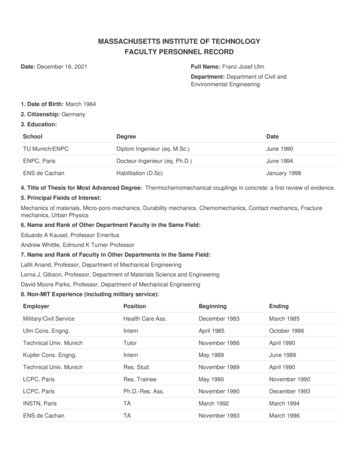
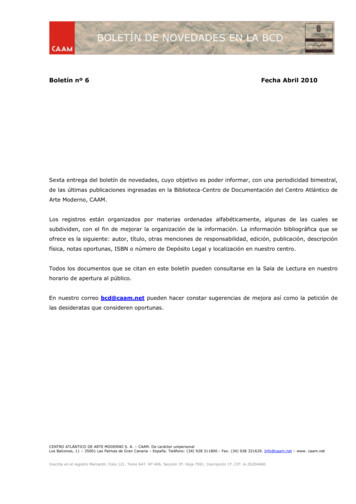
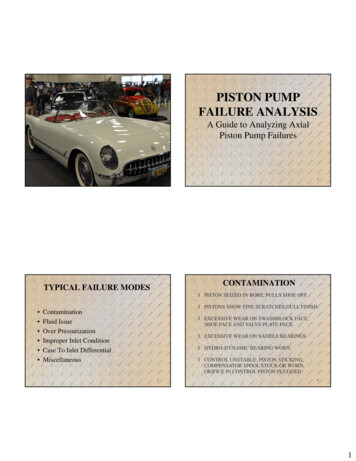
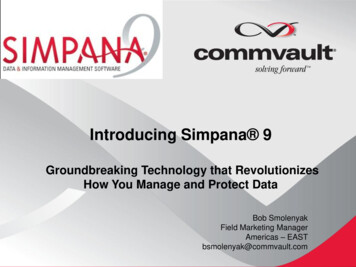



![Welcome [na.eventscloud ]](/img/20/b56961b99642ac787939ce13f4e6fcc1-hpautonomynyfinal5.jpg)
